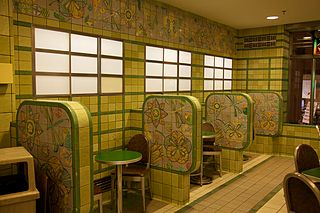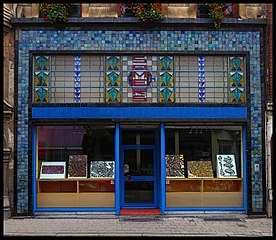Sistu
The second largest city in both Veshiri and the Council of Worlds, Sistu is a major trading hub for both the planet and the wider multiverse. The city's low taxes are attractive to businesses, and the mild tariffs combined with a favorable position for trade over air, land, and river alike means that a significant bulk of Veshiri's trade passes through Sistu's hands.
The city's markets sell a tremendous variety of things, ranging from exotic organisms to strange silks from the far reaches of the worlds, to marvelous contraptions of Veshiri's own design like mechanical singing birds and automobiles.
Demographics
Sistu is incredibly diverse. Only 34% of the population is the planet's native elves.
The city boasts the highest per-capita income in all the multiverse, but suffers from severe income inequality, with the city's top one percent earning on average 89 times as much as the bottom twenty percent - a staggering number, given that the top one percent on the planet earn only five times as much on average as the bottom twenty percent.
Population densities vary dramatically across the city, often with income levels, as apartments are smaller and expected to hold more people in the poorer areas. The most crowded neighborhoods hold a staggering three hundred and ninety thousand people per square mile in their tenements. The city's overall density is around fifty thousand per square mile, including the suburbs.
Government
The mayor of Sistu is, like in many cities on the planet, elected anew every six years. Sistu is trialing a program to allow non-naturalized permanent residents to vote in mayoral and other city elections, in part to encourage businesses from elsewhere in the multiverse to move their headquarters. However, it's much easier to obtain proof of residence for the wealthy, with many of Sistu's long-term migrant workers disenfranchised.
Industry & Trade
Sistu's low taxation and minimal governmental interference in the market make it a haven for businesses both old and new. Sistu is noted for trading significantly more value of goods than its gross domestic product, unique among cities on the planet. Unemployment is at 3.4%, though many struggle in underpaid jobs as a motion to establish a city-wide minimum wage has stalled in the city council's chambers.
The city imports all of its fuel and almost all of its food, due to the already poorly arable lands becoming increasingly stripped of nutrients.
Sistu is a major manufacturing hub, crafting automobiles, airships, home appliances, engines, steamboats, and many other items. Tourism also forms a major part of the city's economy, in part due to its nightlife and markets, in another part due to its position as the main direct entry point to the wider planet.
Infrastructure
Transportation
Sistu's infrastructure is advanced, boasting the best public transit system in all of Veshiri. Streetcars carry workers between the far-flung arms of the greater metropolitan area and move people about within the city itself for five coppers a ride. The streetcar system has fifty-four lines both major and minor. Several companies run steam-powered omnibuses with capacities ranging from six to thirty-four passengers. The city has the largest intercity airship port on the planet, and numerous docking points for smaller, personal airships. A number of ferry lines cross the bay and connect Sistu to outlying islands too far for a bridge, with smaller ferries serving the remotest settlements. Sistu's mayor has also invested in opening more inter-world portals than any other city on the planet - well over a hundred portals, both large and small, connect Sistu to the multiverse. The planetary average is five to a city. Construction has also begun on the multiverse's first ever inter-planetary rail line, with the world's most talented railway engineers precisely laying tracks across the boundaries between universes.Utilities
Sistu imports all her fuel, sometimes for quite some distance. The closest mountains had little in the way of coal to begin with, and much of what was accessible has long since been stripped away. The city considers the high price of fuel to be an ongoing concern, and subsidizes purchases of coal for many of the factories. Furthermore, the city is starting to grow beyond its river's ability to provide fresh water. The city imports some water, and has started rainwater collection campaigns. City scientists are investigating purifying sea water or replacing fresh water with its saltier cousin in some applications.Education
The city's libraries, while not quite as impressive as Lidaidi's, are more than robust enough to serve knowledge to the city's ever growing and ever hungry populace. Sistu Central Library is noted for having translations of each important or popular book into every major language spoken in the city. The city's schools are packed to the brim, Sistu's dedication to providing an education to everychild taxing the city's ancient educational system. New schools open every year in an effort to reduce pressure, with teacher salaries rising dramatically in an attempt to lure more educators in. The city's schools run all day and night, with nighttime classes catering to a handful of nocturnal species and to adult learners, primarily immigrants. Sistu has one ancient university, which mostly focuses on the humanities, and four newer universities that each have their own specialty - science and engineering, business and law, education, and healthcare. There is one cheaper community college within city limits, and a number of others in nearby towns, to serve as trade schools for the city's burgeoning professional workforce.Healthcare
Despite a concerted effort to recruit and train the best doctors and nurses, and to pioneer the way in medical science, Sistu's relative lack of divine healers means it falls well behind healthcare systems from planets such as Alea. The city still fares better than much of Veshiri, and the current mayor has implemented programs dedicated to making sure everyone, regardless of means, has access to quality healthcare, in large part in an effort to quell recent outbreaks of disease.History
Sistu was established a mere 550 years ago, and has since blossomed into one of Veshiri's premier cities. The site has been inhabited intermittently for longer, with archaeological evidence of small villages along the shore of the bay dating back six thousand, five hundred years.
Much of the city's growth has occurred within the last one hundred years, after the city was chosen as one node on the growing railway network, due to its rich potential for shipping. The city first installed its streetcar system fifty years ago, adopting the technology rapidly after it was trialed in the mountainous city of Qacheo.
Architecture
Almost all of Sistu is in the new, modern style of soaring metal buildings that are as much works of art as they are places to live and work, with sweeping geometric designs gracing their facades. Only a few smaller brick buildings, centuries old at most, cluster near the docks. The older factories are mostly along the river, and are squat brick buildings with little ornamentation. Newer factories, made of both brick and metal, have sprung up farther from the river, and rise taller than their older counterparts.
A view of Sistu's landmark Sistu Steam Building, built to hold the offices of said company by architects Lehi Sheai and Niosha Riqi.
Nearly everyone lives in the various apartments of the city, though with the introduction of the streetcar some of Sistu's wealthier workers have started to migrate out to the streetcar suburbs, whose architecture consists primarily of detached brick houses no more than two or three stories high. Most suburban homes are single-family, while the apartments often hold a family or two in a frequently small space.
Apartments usually share a building with offices, restaurants, general goods, pharmacist's, and other services, turning entire floors into neighborhood hubs.
The interior of an ice-cream parlor in one block.
Newer street-facing storefronts are often lavishly decorated, with colorful tiles of glass and ceramic forming geometric or natural patterns, such as in the example below.
Geography
The city sprawls around a large bay and up the river that feeds into it, the mighty Choneo River. The land around the city is very flat, with the nearest mountains several hours' drive by automobile.
The total metropolitan area spreads out over nearly ninety square miles, including water. The city has a number of parks breaking up the neighborhoods, often full of interesting sculptures and fountains. Many have patterned paving stones, a favorite of tourists.
Founded: 2957
Government
Type: Mayor-Council Body: Sistu City Council Mayor: Estomi QisteoArea
Total: 89.2 sq mi Land: 58.8 sq mi Water: 30.4 sq mi Metro: 16.8 sq miElevation
Average: 14 feet Lowest: 0 feet Highest: 98 feetDemographics:
Type
Metropolis
Population
2,940,000
Location under
Characters in Location
Related Professions
Related Plots








I enjoyed your compare and contrast to other locations in your world, as well as the commentary on real world issues dealing with trade and minimum wage! Very nice!